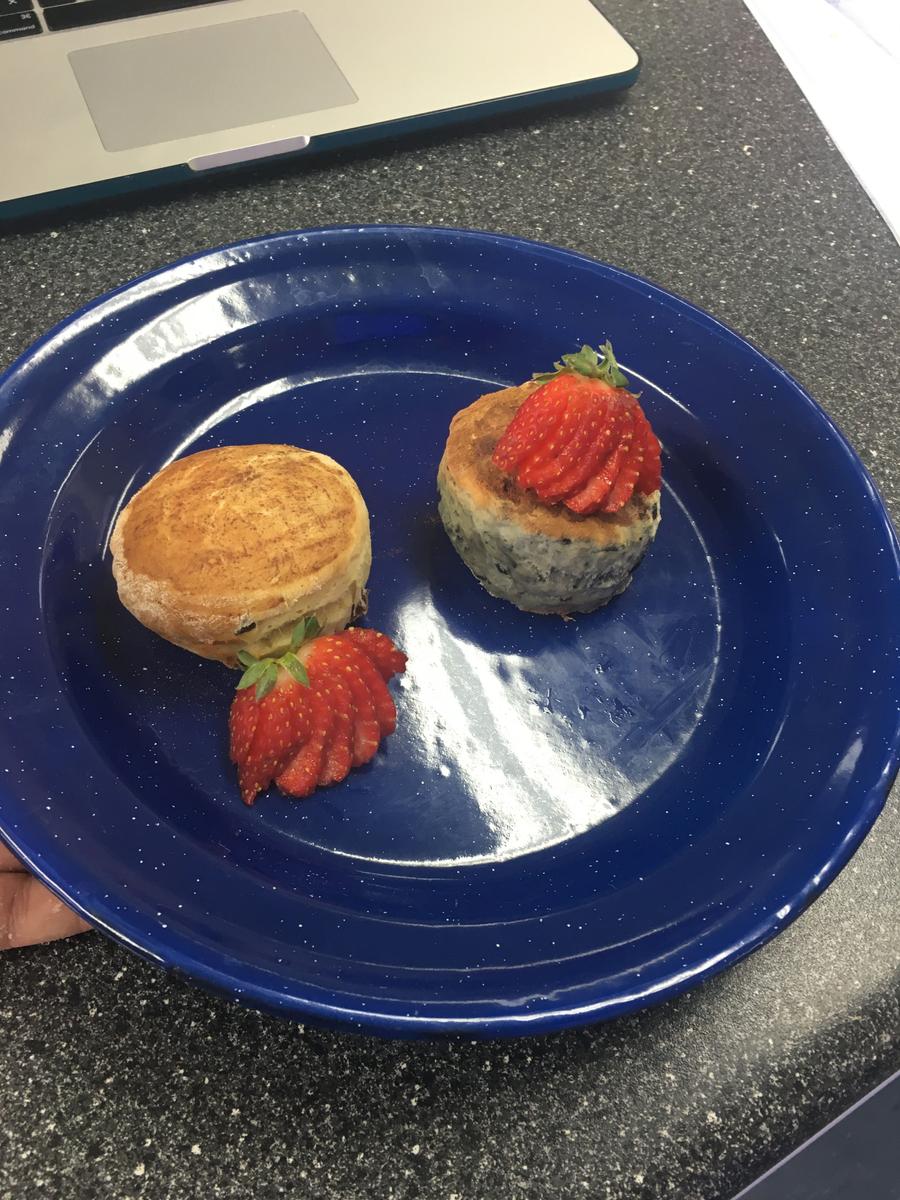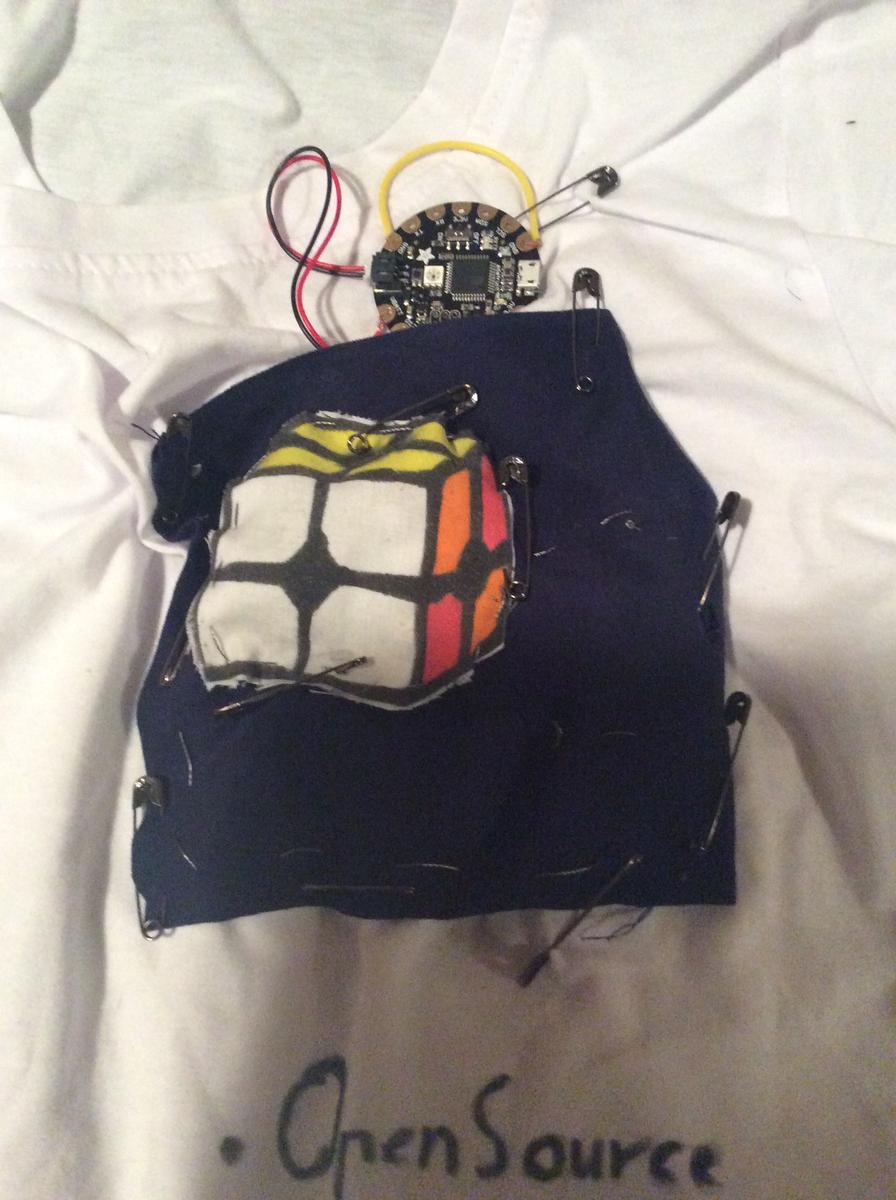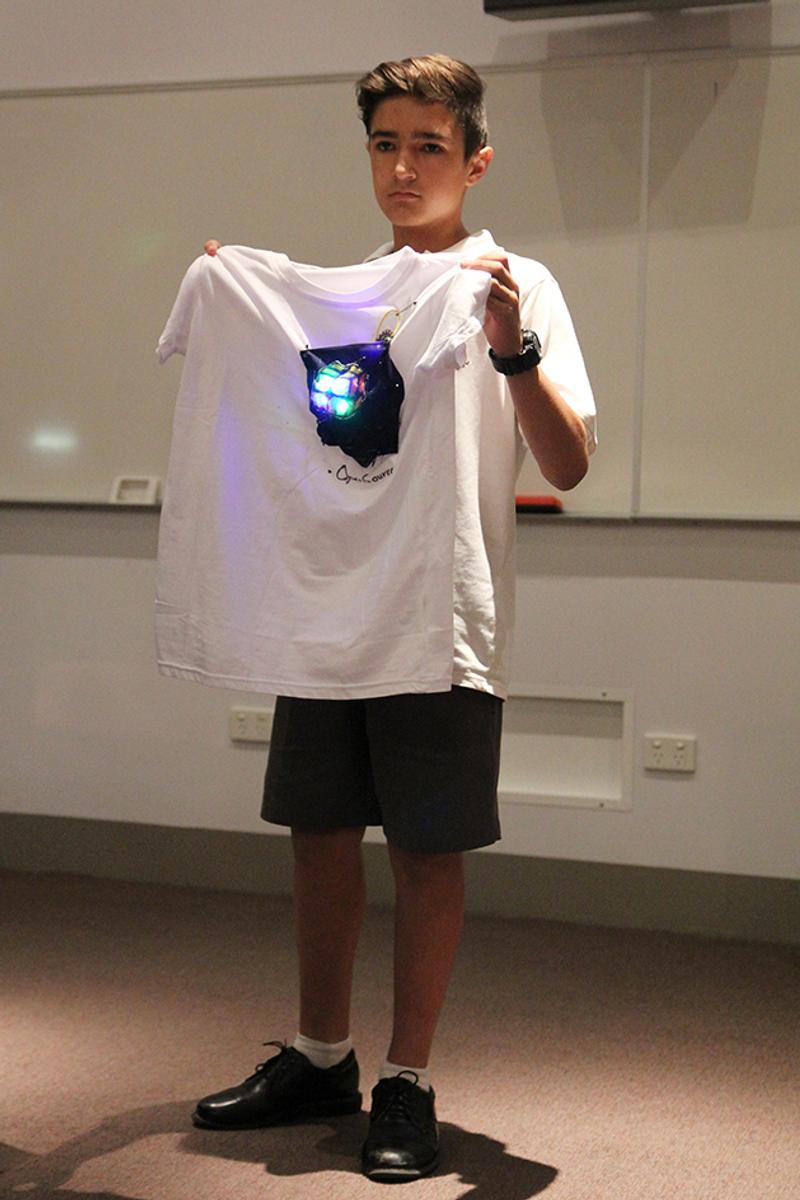TECHNOLOGY

Technology Fees
All Technology elective subjects and all Home Economics Junior classes carry a fee to help cover the increasing cost of materials.
Notices will be issued to students and I ask that parents and guardians please assist the school by paying the contribution as soon as practicably possible.
If you are experiencing any difficulties with this request, please don’t hesitate to contact the school.
Steve Peters
Head of Technology
Home Economics
Year 9
Last week in my Year 9 Home Economics class, George Harries (918) and Bailey Chandler (913) took part in a 'Scone Design Challenge'.
They designed, planned, prepared and baked delicious scones, filled with fresh berries and lighted dusted with cinnamon.
The boys have come a long way in terms of their skill development and dedication to the subject. Well done boys!
Miss Stavrou
eFashion Event
Alec, Stuart, Luke and Nicholai from the Year 8 SEALP class attended the eFashion event at Box Hill Lakeside over 2 days.
They teamed up with students from surrounding schools to investigate and work with conductive thread, LEDs, motion sensors and computer programming sequences. The event concluded with a fashion exhibition accompanied with student narration, showcasing their designs.
Student reflections of the event;
Last Thursday and Wednesday Alec, Stuart, Nicholai and I went to an eFashion challenge. We found it much more productive to work on the same subject all day rather than when the day is split into periods. We worked in teams of two. First we had to come up with an idea; this would've been the hardest, apart from the sewing. Most of the groups did their project on white shirts that were included in the kit.
Team Deadpool - Luke Frogley
In the kit, we had an Adafruit Flora, four LED NeoPixels, one gyrometer, one colour sensor, one light (Lux) sensor, alligator clips, conductive thread, a sheet of conductive thread, a battery pack, a shirt and some pieces of cloth for testing.
The main part of our kit was the Adafruit Flora. The Adafruit Flora was the micro-controller that we used to control the parallel circuit of four LEDs (Light Emitting Diodes). The alligator clips were vital for testing the circuit before sewing it on to our piece of clothing. We could choose whether we wanted to include one of the sensors or none. When we were sewing we had to be extremely careful because if two wires touched it would short out the circuit.
OpenSource - Stuart Morrow
We had to design the setup of the LEDs within the shirt as part of a pattern. The circuit would be powered by a battery and connected to each of the LEDs with conductive thread. We had to sew the thread through the shirt, being especially careful not to let the threads cross, otherwise it would lead to the design short-circuiting and letting off smoke.
Team Moose - Nicholai Johnson-Shortis
We programmed the Adafruit Flora with the Arduino IDE, which is the default programming interface for Arduino microcontrollers like the flora, the flora is a “wearable platform”, which means a technology that is designed to be sewn into clothing. It is designed to be inconspicuous and comfortable.
The flora is not difficult to program, with Adafruit supplying the required libraries and examples to get the flora up and running quickly. My group especially used custom code that Adafruit didn't supply as an example and made our lights run in a chase sequence.
Team Moles - Alec Pullen
Year 9
Pancakes
Friday 18 March
Periods 5 & 6
Home Economics Food Preparation
Miss Schroder's class
Best pancakes of the day. Well done boys!
Caitlin Marshall
Assistant Head of Technology






